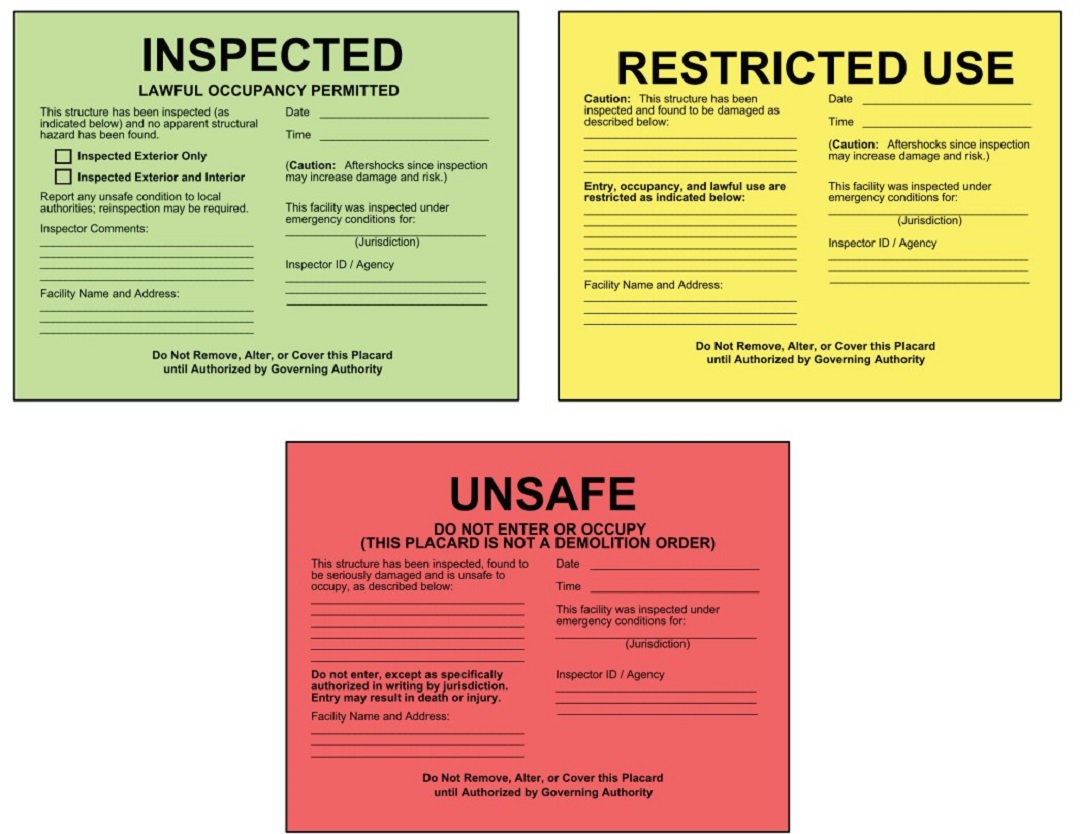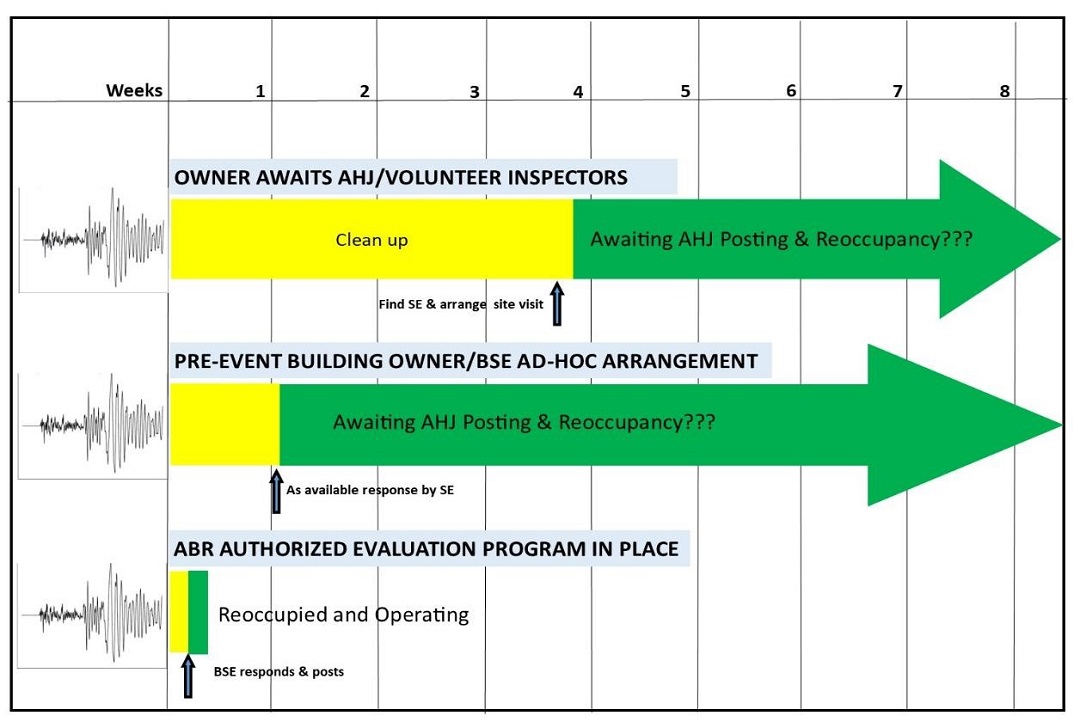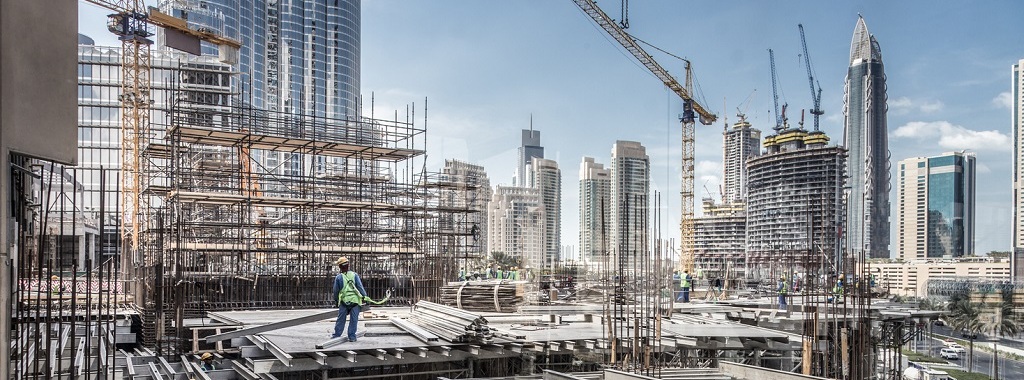Remember June 2020? While the pandemic was raging, we produced a blog post entitled “Business Owners Today: What Else Could Happen?” Well, I guess the answer to that rhetorical question is a LOT: the eventual decline of the pandemic, dramatic national government transitions, economic ups and downs, natural disasters and a devasting war abroad.
We as a community have also learned from the pandemic to look at our facilities differently and begun to embrace the concept of “functional recovery.” For example, we learned that in some communities we should consider our local grocery stores “essential” because we need them to be up and running with a minimum of downtime.

Following a damaging earthquake, a critical step toward community recovery is the completion of post-earthquake safety evaluations of structures to identify buildings that are unsafe to enter, as well as buildings that can continue to be occupied. This means that residential occupants will have shelter, reducing the burden on social services that would have been required if they were displaced, and commercial owners and tenants can continue their business, generating income, employing workers, and providing services, some critical, to the community. Local building departments, officially identified as Authorities Having Jurisdiction (AHJ), are expected to provide these evaluations within their jurisdiction, which may need to be completed multiple times due to aftershocks. As seen in recent earthquake events, this can become overwhelming very quickly.
In our 2020 blog, we introduced a Back-to-Business (B2B) program which is a public/private partnership to enable automatic deputization of designated design professionals (now identified as Building Safety Evaluators, or BSEs) to legally post a particular building as green, yellow or red. The idea for this program grew out of the Building Occupancy Resumption Program (BORP) envisioned by the San Francisco Building Department and the local structural engineers association in the early 1990s. The program basically shortens the time between earthquake shaking and reoccupancy of a building and therefore can increase the safety of building occupants, likely reduce the costs of business interruption, and improve resiliency of a community. Growth of these programs has been rather steady but slow, with versions of the program now adopted in at least nine jurisdictions throughout the United States. With this growth have come new lessons and different approaches.

New Guideline
The January 2021 Report to Congress, FEMA P-2090/NIST SP-1254 “Recommended Options for Improving the Built Environment for Post-Earthquake Reoccupancy and Functions Recovery Time,” identifies the development and implementation of Building Occupancy Resumption Programs as one of several recommendations.
In response to the FEMA P-2090 recommendation, it became apparent that it was time to collect the best practices from existing programs and develop general guidelines. The recently published guidelines document, “Guidance for Accelerated Building Reoccupancy (ABR) Programs” (FEMA P-2005-1), was funded by FEMA in response to the recommendation, and the Applied Technology Council managed the project. The document was completed and published in January of this year.
The guidelines document includes:
- A summary of all active programs and a description of their various features
- Benefits of an ABR program
- Types of programs to be considered – “authorized” and “advisory”
- Recommended outreach activities
- Key issues for program management, design, and implementation – including BSE qualifications, preparation before an event, post-event activities, and legal considerations
- Templates for administrative documents to facilitate ABR programs – available for free download
- Agreement between owner, city, and BSE
- Agreement between owner and BSE
- Memorandum of understanding (MOU) for an advisory program
- Notice of participation in an advisory program

Benefits
There are several important benefits of an ABR Program:
- Faster recovery of the community
- Relieving some of the AHJ’s burden to conduct immediate safety evaluations in a chaotic post-earthquake environment
- Freeing personnel for other essential job duties
- Providing more accurate safety evaluation results to building owners as a result of required pre-event work that allows BSEs to familiarize themselves with the building’s structural and nonstructural systems and identify critical areas to evaluate after an event
Legal Considerations
One of the most common pushbacks from AHJ’s against establishing an ABR has to do with their legal concerns. The new FEMA guidelines specifically address those concerns. An objective evaluation of any changes to liability for any of the three responsible parties is included. It’s clear that the liability to the owner does not change – they will be retaining an engineer to evaluate their building with or without an ABR program in place. The BSE has some considerations and should communicate with their professional insurance carrier. However, liability in actuality does not change – they are licensed professionals and subject to state licensing laws, and they are not volunteers but are working under a contract with the building owner. However, they do need to recognize the unique conditions associated with these services: Specialized qualifications are needed; they will be working with a sense of urgency during the post-event emergency; they will be working in relatively high-stress, potentially hazardous conditions; and, finally, their complete access to the structures may be limited and therefore some judgment calls may be necessary.
The liability concerns associated with an ABR program are generally voiced most loudly by the AHJ. However, there are precedents and thoughtful agreement terms that can quiet those concerns. First, the AHJ is generally immune in accordance with the provisions of “sovereign immunity” and various other state laws. Typically, state laws allow the AHJ to delegate their authority, and the 2021 IBC specifically states, “The office or other designated authority charged with the administration and enforcement of this code, or a duly authorized representative.” Some sample statements of liability from the existing programs are included in the guideline’s documents.
In conclusion, the new FEMA P-2055-1 provides recommendations, discussions of key issues, and template administrative documents for designing and managing programs that will accelerate building reoccupancy in communities following earthquake events. A successful program can be especially valuable owners either of a campus comprising multiple buildings or of buildings with high interruption costs, socially and economically.
The document is now available for FREE download from the FEMA website and in hard copy.
Now we have the tools to spread the program and to help increase our communities’ resilience!


